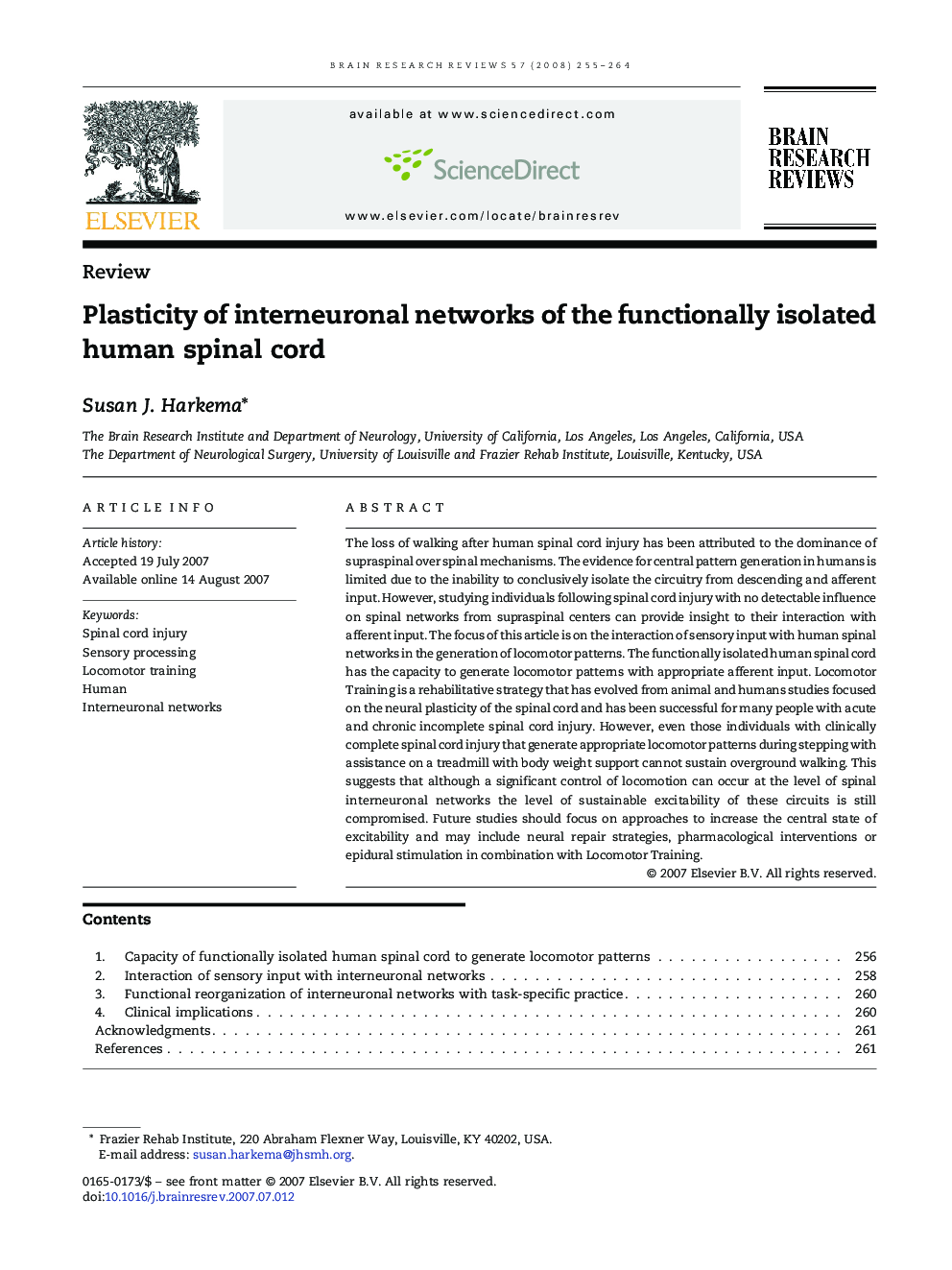| Article ID | Journal | Published Year | Pages | File Type |
|---|---|---|---|---|
| 4333937 | Brain Research Reviews | 2008 | 10 Pages |
The loss of walking after human spinal cord injury has been attributed to the dominance of supraspinal over spinal mechanisms. The evidence for central pattern generation in humans is limited due to the inability to conclusively isolate the circuitry from descending and afferent input. However, studying individuals following spinal cord injury with no detectable influence on spinal networks from supraspinal centers can provide insight to their interaction with afferent input. The focus of this article is on the interaction of sensory input with human spinal networks in the generation of locomotor patterns. The functionally isolated human spinal cord has the capacity to generate locomotor patterns with appropriate afferent input. Locomotor Training is a rehabilitative strategy that has evolved from animal and humans studies focused on the neural plasticity of the spinal cord and has been successful for many people with acute and chronic incomplete spinal cord injury. However, even those individuals with clinically complete spinal cord injury that generate appropriate locomotor patterns during stepping with assistance on a treadmill with body weight support cannot sustain overground walking. This suggests that although a significant control of locomotion can occur at the level of spinal interneuronal networks the level of sustainable excitability of these circuits is still compromised. Future studies should focus on approaches to increase the central state of excitability and may include neural repair strategies, pharmacological interventions or epidural stimulation in combination with Locomotor Training.
